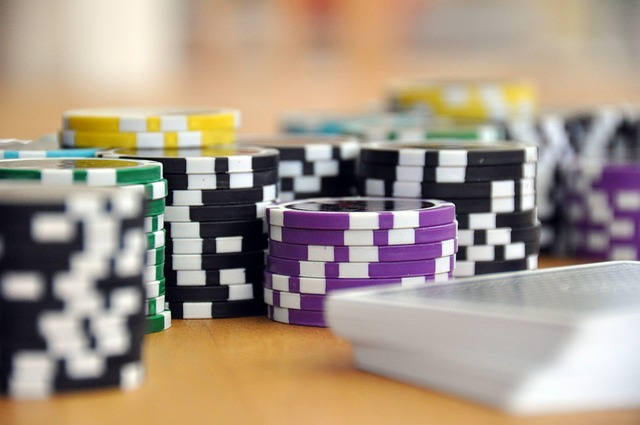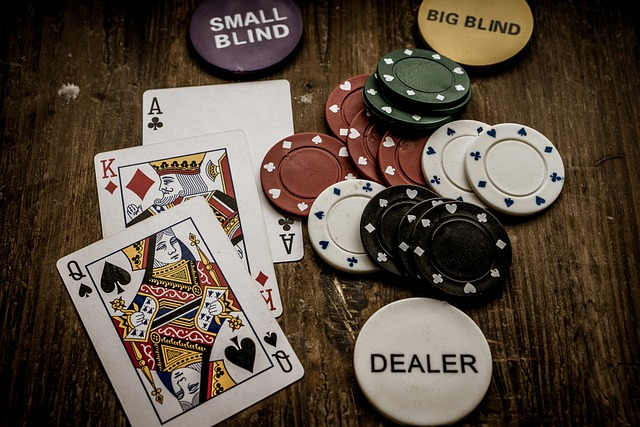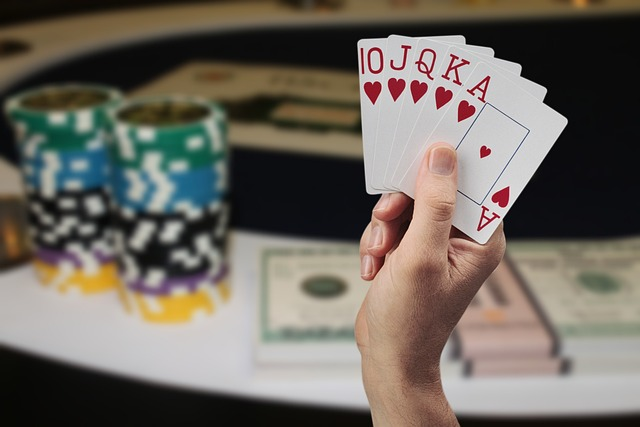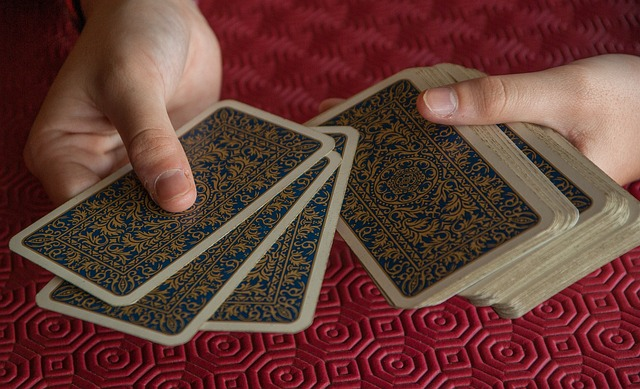
Texas Hold'em is one of the most popular poker variants globally. While mastering this game may feel daunting, it is not impossible. The trick is to understand the basic rules and poker hands. Once that's done, playing Texas Hold'em will be a cakewalk. Texas Holdem poker is a strategic game that requires complete focus and attention.
Are you ready to grasp the fundamentals of Texas Hold'em poker? Don't worry. This beginner's guide is easy to understand and will let you navigate the Texas Hold'em poker rules confidently. Let's get started!
What is Poker Texas Holdem?

Texas Hold'em poker is a fascinating card game that requires you to bring your best to the table. In this game, you aim to create the best five-card hand.
Each player receives two private cards, and five community cards are dealt face-up. The goal is to use a combination of personal and shared cards to form a winning hand. The game involves skill, strategy, and quick thinking.
You can bet, raise, or fold in different rounds, which adds an element of bluffing and psychology. The player with the strongest hand or the last one remaining after others fold wins the pot.
How To Play Texas Hold'em Poker?

Now, let's unpack the Texas Hold'em rules and learn how to play the game easily. Here are the basic poker rules Texas Holdem step-by-step.
Objective of The Game

In poker Texas Hold'em, betting occurs before and after each community card is revealed. Players take turns placing bets, and proceed to the next card, all players must contribute an equal amount of chips to the pot. This ensures fairness and participation.
The best poker hand in the game ultimately determines the winner of the pot. The goal is to have the highest-ranking five-card hand. Betting involves strategic decisions, as players may raise, call, or fold based on their strength of their hand or their ability to bluff others.
The Deal

As per the Texas Hold'em rules, each player is initially dealt two private cards, known as hole cards, visible only to them. The game then progresses as the dealer deals five community cards on the table. However, this is done in different betting rounds, one by one.
These community cards are shared and can be utilized by all players in combination with their hole cards to create the best possible five-card poker hand. The objective is strategically using this combination to outdo opponents and claim the pot.
The Play

Now let's explore the different aspects of the game so you can understand them to ace your poker game.
The Blinds
In Texas Hold'em, two players must post forced bets, called blinds, before each new hand begins. These blinds initiate the betting round and prevent a passive game where players can wait for strong hands without contributing to the pot.
The player to the dealer's left posts the small blind, usually half the amount of the subsequent big blind. The player to the left of the small blind posts the big blind. For example, in a $2/$4 game, the small blind is $2, and the big blind is $4.
Small and big blinds play a crucial role in maintaining the action. In tournaments, small and big blinds increase at regular intervals to encourage betting and prevent excessively long play. As the number of players decreases and stacks grow, small and big blinds also increase.
Player Betting Options
Players can take several actions during betting rounds in Texas Hold'em and other poker variants. This includes fold, check, bet, call, or raise. The options available depend on the actions of previous players.
Fold
If a player decides to fold, they forfeit their hand and give up any chance of winning the current pot. They discard their cards and take no further part in the hand.
Check
A player can choose to check if no bets have been made in the current betting round. This means they decline to bet but retain their cards and let them stay in the hand without contributing to the pot.
Betting round
If no one has placed a bet in the current round, a player can initiate a betting round by making a bet. This introduces chips into the pot, prompting other players to either call, raise, or fold.
Call
When a player before them has placed a bet, the subsequent players can choose to call. This means matching the previous bet amount, staying in the hand, and contributing an equal amount to the pot.
Raise
If a player wants to increase the stakes, they can choose to raise. This involves matching the previous bet and then adding the amount to it. The subsequent players must then match this higher bet, call, or fold. The flow of actions depends on the decisions made by each player in turn. Betting rounds continue until all players have either folded or contributed an equal amount to the pot.
Betting Rounds
Preflop
After players have seen their hole cards, they can play their hand. The preflop betting round starts from the left of the big blind, which is considered a 'live' bet for this round. The player sitting immediately to the left of the big blind is the first to act. This player has the choice to fold, call, or raise.
For example, if the big blind is $4, it would cost $4 for a player to call and stay in the hand. They must put in at least $8 if they choose to raise.
The betting action then proceeds clockwise around the table. Each player, in turn, has the same options to fold, call, or raise based on the actions of the preceding players. The betting continues this way until all active players have placed equal bets into the pot.
Once all bets are equal, the round of betting concludes, and the game moves on to the next community card being revealed.
The Flop
After the initial round of betting, where players see their hole cards, the next phase begins with three community cards on the board, which are dealt face-up. The flop is the second betting round.
This set of cards is collectively referred to as the flop. These community cards are shared and available to all players still in the hand.
The betting on the flop starts with the active player immediately clockwise from the dealer button, also known as the button. This player is the first to act in the betting round. The available betting options are similar to those in the pre-flop round, letting the players check, bet, call, or raise.
If no bets have been made before a player's turn, they can check, which means declining to bet but staying in the hand. If a player checks, the action then moves to the next active player clockwise, who also has the option to check, bet, call, or raise based on the actions of the preceding players.
Betting continues this way until all active players in the hand have either placed equal bets into the pot or folded. Once the betting on the flop is complete, the game progresses to the next community card.
The Turn
After the betting on the flop is completed in a game of Texas Hold'em, the next phase involves dealing with the turn, which is the fourth community card. This card is dealt face-up on the board and is sometimes called Fourth Street. The turn card joins the three existing community cards from the flop.
Following the fourth community card, another round of betting begins. The active player immediately clockwise from the dealer button becomes the first to act in this betting round. As with previous betting rounds, this player can check, bet, call, or raise, depending on their strategy and the actions of preceding players.
Players take turns clockwise, making their betting decisions based on their hand strength and the potential of the community cards.
The River
After the betting on the turn is concluded, the final community card, known as the river or Fifth Street, is dealt face-up on the board. This card completes the set of five community cards available to all players in the hand.
Following the appearance of the final community card, the final round of betting ensues. In this final round, the active player immediately clockwise from the dealer button initiates the final betting round action. The same betting rules apply as in the previous rounds. Players can choose to check, bet, call, or raise based on their judgment of the hand strength and the actions of preceding players.
Betting proceeds clockwise around the table and allows each player to make strategic decisions. The betting round continues until all active players have either placed equal bets into the pot or folded. Once the betting on the river is complete, the game progresses to showdown.
The Showdown
In Texas Hold'em games, after the final betting is complete, a showdown occurs if more than one player is remaining. The last person to bet or raise during the final betting round is the first to reveal their cards. However, if there was no bet on the final round, the player immediately clockwise from the dealer button becomes the first to show their cards.
The player with the best five-card poker hand, formed by combining their hole and community cards, wins the pot. If multiple players have identical hands, the pot is equally divided among them since all suits are considered equal in Texas hold 'em games.
After the pot is awarded, a new hand begins. The dealer button moves clockwise to the next player, and the process starts again.
Texas Hold'em Poker Hands

Let's take a look at the poker hands ranking from lowest to the highest. Usually, the highest poker hand is the best hand unless it is a low-ball poker.
High Card
When no one has any poker hand rankings, the highest card in your hand determines the winner. For example, you win if your highest card is a King and your opponent's is a Queen.
One Pair
One pair is a hand with two cards of the same rank. If you have a pair of 8s and your opponent has a pair of 7s, you win with the higher pair.
Two Pair
Having two sets of pairs makes two pair. An example of two pair is two 5s and two Jacks.
Three of a Kind
In three-of-a-kind hand consists of three cards of the same rank. If you have three Queens, it's a three-of-a-kind.
Straight
Five consecutive cards, regardless of the suit, make a straight.
Flush
Five cards of the same suit make a flush, not necessarily in sequence. For example, if you have five hearts, it's a flush.
Full House
This is a combination of three of a kind and a pair. For example, three 10s and two 4s.
Four of a Kind
Having four cards of the same rank makes this hand. For example, if you have four Kings, it's a four-of-a-kind.
Straight Flush
This is a combination of a straight and a flush. It's five consecutive cards of the same suit, like 5-6-7-8-9 of diamonds. This is the second-best poker hand.
Royal Flush
The highest straight flush, from 10 to Ace, all of the same suit, makes a royal flush. For example, 10-J-Q-K-A of spades. This is the best poker hand!
What's one of the most popular types of poker games?
While there are different types of poker games, one of the most popular variations of poker games is Texas Hold'em.
What are the four types of cards in poker?
Four types of cards in poker are the four types of suits. They include hearts, diamonds, clubs, and spades. These four suits are present in all types of poker games as they use a standard deck of cards.
How many players can play a game of poker?
The number of players who can play a game of poker can vary, but typically, a game can accommodate anywhere from two to eight players. However, some variations of poker may allow for more or fewer players.

